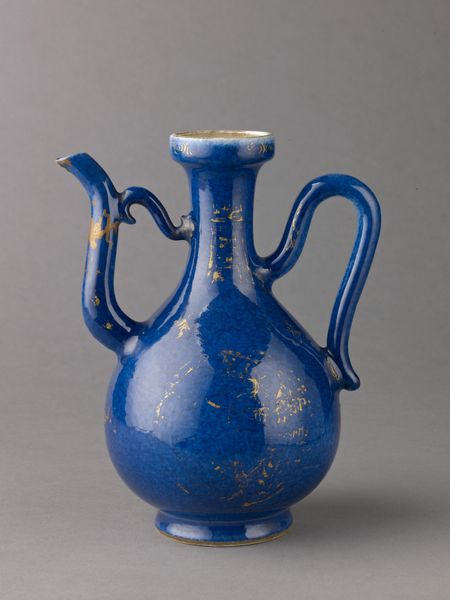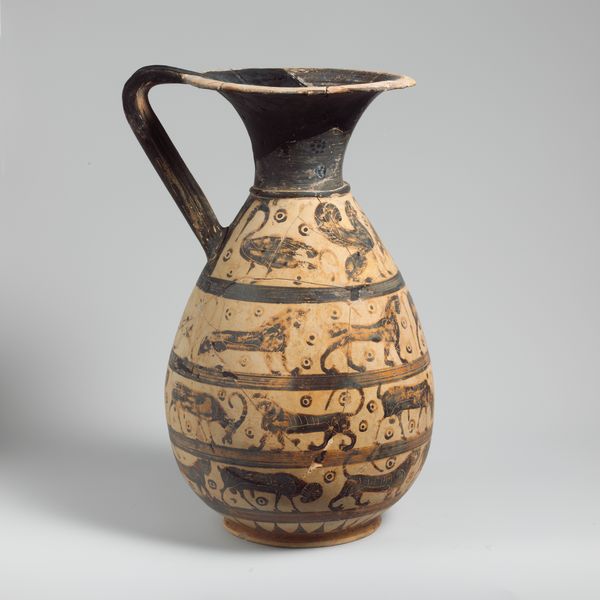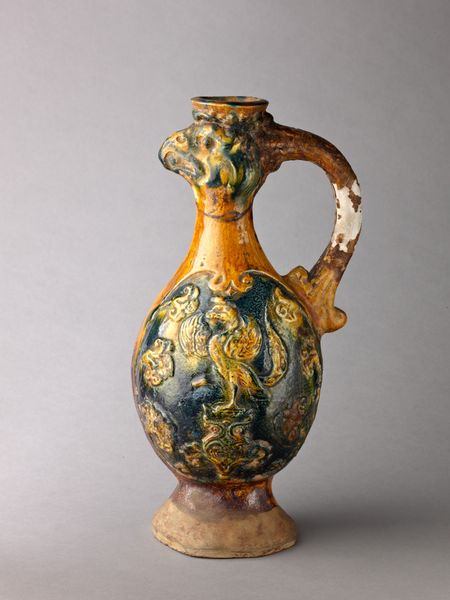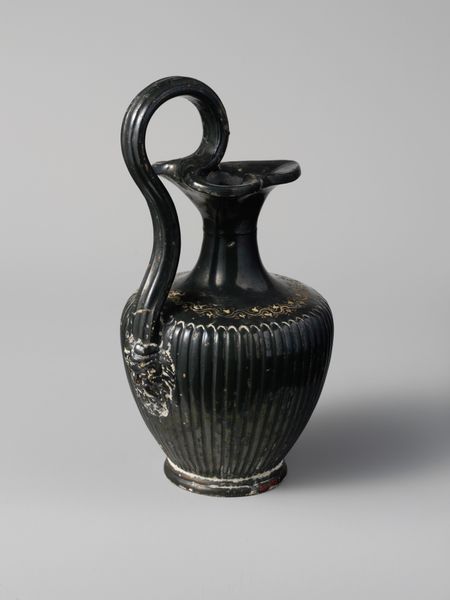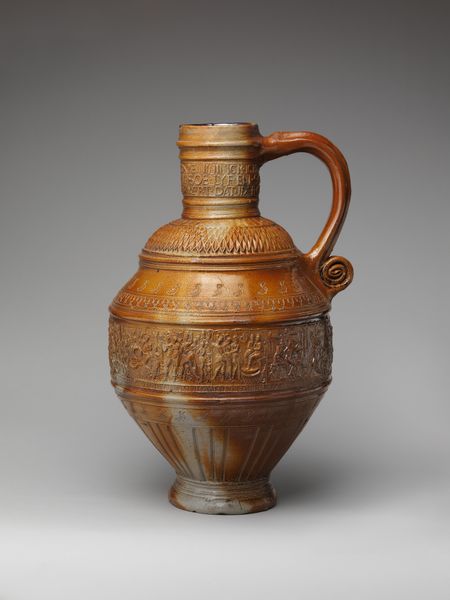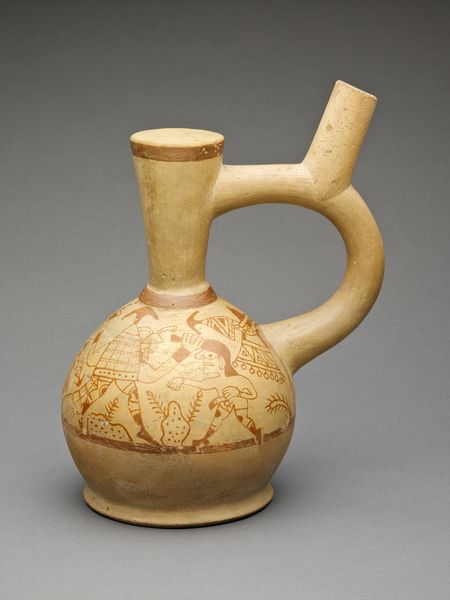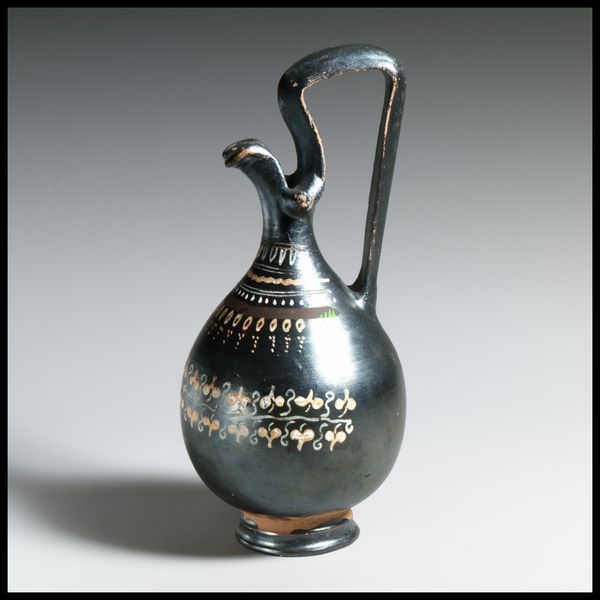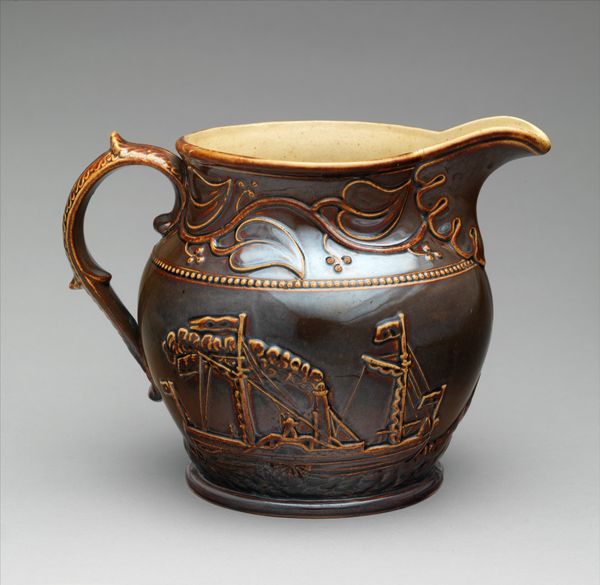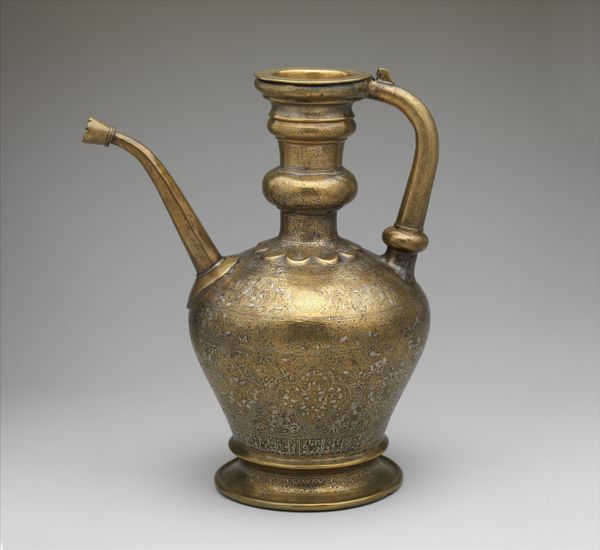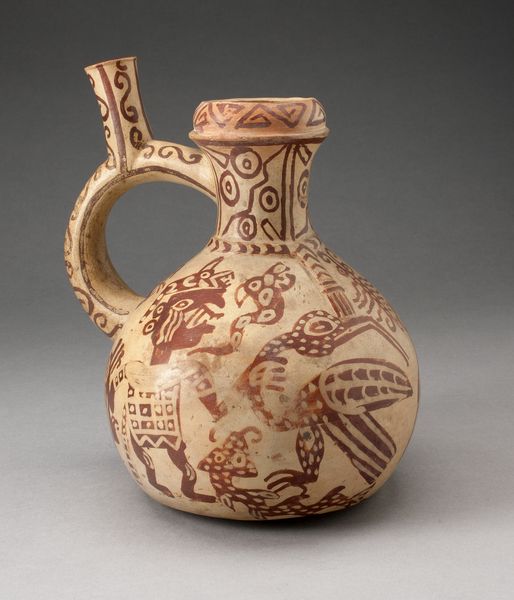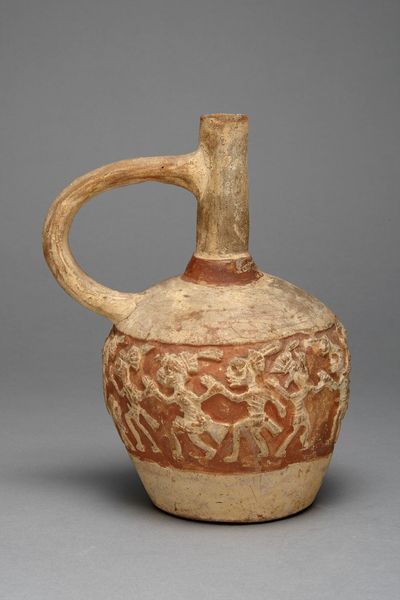
ceramic
#
asian-art
#
ceramic
#
ceramic
#
decorative-art
#
erotic-art
Dimensions: Height: 6 1/2 in. (16.5 cm.)
Copyright: Public Domain
Curator: The Chinese Ewer dates from between 1662 and 1722 and is currently housed at the Metropolitan Museum of Art. It’s a stunning piece of ceramic work. Editor: My initial impression is the contrast. The glossy black ceramic against the gold decoration, the way the light catches those gilded phoenixes—it gives a real sense of opulent drama. Curator: Right, consider the process behind it. The high-fired porcelain, that almost flawless black glaze—likely a labor-intensive, multi-stage firing process in specialized kilns. Think of the level of skill involved in controlling the temperature to achieve that depth of color and evenness of finish. Editor: It immediately brings up questions about who made it, and for whom? We’re looking at a piece made during the Qing dynasty, a period marked by both imperial patronage of the arts and enormous social upheaval. A piece like this surely served a purpose beyond the purely decorative. Its symbols, its materials—they all communicate power and status, certainly. Curator: Absolutely. And notice the multiple handles! It challenges a simple pouring gesture; perhaps hinting at shared rituals of consumption or the performance of service. The gilded phoenix suggests imperial association; but also echoes back through dynasties, speaking to enduring concepts of virtue and prosperity. Editor: Indeed. We can read the Phoenix figure through the lens of gender as well, where it traditionally pairs with the dragon—often seen as potent symbols for empress and emperor within dynastic power structures. Curator: Good point! The way that black background accentuates the figures creates such a powerful impression. The whole object reveals this fascinating confluence of material artistry, consumption rituals and social symbolism. Editor: This piece urges us to reconsider what it means to imbue everyday objects with complex meanings about the historical forces that shape society, politics and personal narratives. Curator: It leaves you pondering about the ingenuity of its production while questioning the purpose for its creation.
Comments
No comments
Be the first to comment and join the conversation on the ultimate creative platform.

